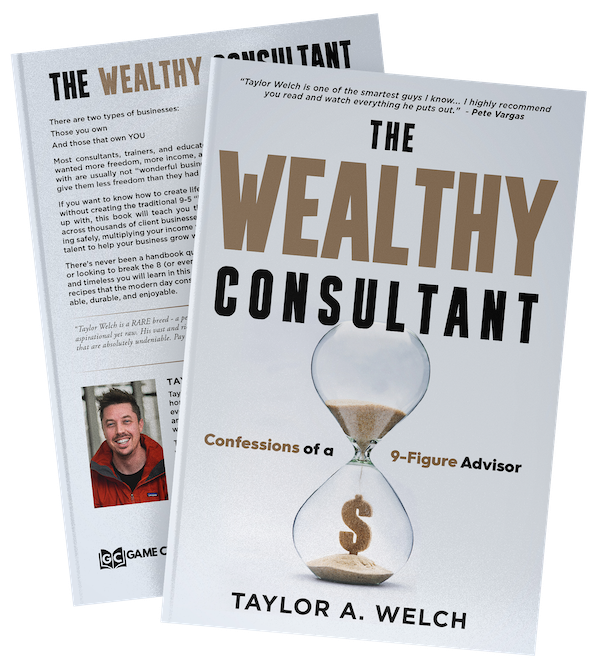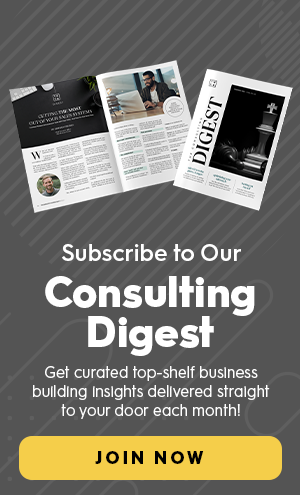Mastering Attention is an Art Form
Here are a couple of simple truths that the top business builders in the world understand:
- If you can’t get people to pay attention to you, you will go broke.
- If you can’t take attention and convert it into customers, you will go broke.
A lot of people have figured out how to master number one. The act of “getting attention” is perhaps easier in the age of the internet than it has been in all of human history.
But, number two? Ah, now that’s a very different story.
The “bullsh*t meter” of the average consumer has gone up in parallel with the rate of access to information.
Studies show that the average person is bombarded with around 10,000 ads per day, of which only about 25% are actually relevant. With that much sifting of information going on, the human brain is becoming more and more adept and filtering out messages that aren’t “in line” with what they want and need.
So, how do we get the eyeballs of our target market engaged with our messaging, and then use that messaging to retain the attention of those who are a great fit for our brand?
The answer lies in demonstration.

How Do We Define a “Great Fit”
Before we dive headlong into demonstration and the assets you can use to convert your best attention into paying clients, let’s define a “great fit” for your business.
- They need your product/outcome
- They know they need your product/outcome
- They have means to follow the process (macro)
- They have means to follow the process now (micro)
People who meet these criteria fall into what we call your ICPs, or Ideal Client Profiles. At the Wealthy Consultant we have 3 ICPs. We won’t go into every little detail of what makes them ICP 1, 2, or 3 – but here are the basics:
- ICP 1: Our very best clients – Established consulting business selling information, expertise, or customized skill. These clients are “B2B” service providers who help other businesses exceed in key business functions. These are the folks we love to serve the most and who tend to get the most enjoyment out of being a part of our community.
- ICP 2: Bread and butter clients – Established consulting business selling information, expertise, or customized skill. These clients also fall into “B2B” category but their pain points and resources are different, and they typically require more attention than an ICP 1 client. These make up the largest portion of our client base.
- ICP 3: Lower quality clients – Established consulting business selling information, expertise, or customized skill. These clients are either B2C (meaning different regulatory issues) or B2B with low income and low business experience. We can absolutely help them and crush it for them, but it requires much more of our team’s time and bandwidth.
It is 100% worth your time to sit down and outline what constitutes an ICP 1, 2, or 3 level client for your particular business. This can have a huge impact on both your sales process and your marketing.
If the vast majority of your clientele are ICP 3 level folks who are needier and take up a larger portion of your bandwidth to fulfill, it might be time to step back and take a broader look at your marketing and messaging to see why you are attracting so many of your lowest level of clients.
That’s a blog post for another day, though!
The 6 Types of Demonstration Assets
Now that we’ve gotten our ICPs in order and we know how to define who the “best fit” is for our offer, it’s time to talk demonstration.
Your market is watching intently to see if you are the real deal – if you actually can do what you SAY you can do. Demonstration is about proving to them beyond a shadow of a doubt that you are as real as they come.
Let’s break down the 6 ways to demonstrate your value to your market.

NUMBER ONE – Direct Offers
This is the demonstration asset that most of you are probably very familiar with. That’s because, if you’re in the coaching and consulting space especially, your newsfeed is constantly getting bombarded with them.
These are your webinars and VSL – assets that waste no time in getting directly to the pitch.
The benefit to direct offers is that they save time in your sales cycle. Research shows that 3-5% of your market is ready to buy at any given time. They just need the opportunity. These can be an effective way to market to that small slice of your audience and simply say, “Hey, we have a thing – you want it?”
NUMBER TWO – Communities
Communities can take a variety of forms:
- Facebook groups
- Telegram chat groups
- Discord communities
- Slack communities
- Circle communities
- Email lists
- We could go on and on and on here…
The basic idea is, anywhere you have a grouping of people that you can communicate directly with… you have a community!
These can be leveraged to tremendous effect by a savvy marketer. For instance, we have a private Facebook community for The Wealthy Consultant. We post regularly, do special promos and giveaways, and start discussions about different aspects of growing and scaling consulting businesses – all directly within the group.
The benefit to this, is that people don’t consume your content in a vacuum. They get to see not only what you post… but how other people in the community react to it. We’ll do a separate post on the power of community very soon!
NUMBER THREE – Events
We are constantly emphasizing the power of “being in the room” with the clients we serve. There really is nothing quite like it. Whether it be virtual or in person, an event is a unique opportunity to transfer an incredible amount of value with people who have taken an additional step to go out of their way to be present.
If the primary benefit of communities is the social effect – people getting to see how other folks in the group react to and engage with certain things – then events are that, but on STEROIDS.
One of the other benefits to events is that they can have a flywheel effect. Load up the event with valuable information for your target market (strategies, tactics, frameworks, or mindset coaching), record all of it, then package it together and sell it as a product (which just so happens to be the next asset on the list).
NUMBER FOUR – Products
A product is any purchasable piece of training or coaching that doesn’t (typically) have a live fulfillment aspect attached to it. An event can technically be considered a product, if it is a paid event – but usually, when we are talking about products, we are talking about paid courses, video trainings, downloadable PDFs, etc.
When a customer pays money for access to a piece of training from you, the chances of them engaging with and consuming that training are exponentially higher.
We have several examples of paid products within our business. You can find those here.
NUMBER FIVE – Books
Books are essentially a type of product. However, we break them off into their own category for two reasons:
- They are more widely distributable (and through very different channels – both physical and digital) than an online course or other training.
- They have an ability to engender a feeling of trust in a way that is entirely unique to the written word. When people take the time to read a 100 to 200 page book, they feel as though they have spent actual time talking to the author. There’s a deeper sense of experience than with most video courses or downloadable pdfs.
Example: The contents of this blog post are expanded upon in Taylor’s new book, “The Wealthy Consultant: Confessions of a 9-Figure Advisor” (in chapter 6 – “Demonstration”).
NUMBER SIX – Content
Number six is a whopper… it’s your content.
For a large number of entrepreneurs this is the most difficult, because it requires the most consistency over the longest periods of time.
Everyone wants an 8-figure business and says they’ll do “whatever it takes” to get one. But they won’t commit to publishing a blog post once per week, or adding value every day in their communities, or recording and putting out podcasts, or jumping in front of a camera each month to get fresh videos on their Youtube channel, etc, etc.
This one requires time, energy, and a level of dedicated effort. However, once you commit to it and actually follow through – content is one of the deepest “moats” you can possibly have in your entire business. Nobody (and we do mean nobody) can touch a solid content strategy.
“Where Do I Start?”
The beauty of having a solid system of demonstration is that it just begins to layer until scale in your business becomes inevitable.
Flywheels trump funnels – always.
Example: You create a blog post, and that blog post links out to one of your communities (say a private Facebook group), your community contains posts from you (provided you’ve been consistent) which contain links to a virtual event you’re holding, on that event you have a product that you’re selling (maybe a video training series), and that product contains a link to book a call (via direct offer) on the thank you page. Layers, on layers, on layers, on layers…
Just consider it “Demonstration Inception”… or “Demonstreption” (?)
“But where do I begin?”
We recommend beginning with content. It may take the longest to rev up, but once it does, it’s indestructible.
Then, begin the process of diagramming out your flywheel. Which of your pieces of content can form the foundation of a new product? Can that product contain links to a direct offer? Can it contain links to a community?
Begin creatively layering your demonstration assets, and create a web that is difficult for your ideal market to ignore.
And the net result of a good web? You get to help more of the people you love helping and make an impact in your world.

Get Taylor’s Book to Learn More about Demonstration
Taylor Welch (CEO of The Wealthy Consultant) devotes an entire chapter to the art of Demonstration, and how all 6 demonstration assets form the larger “funnel” of your business (plus how they help you generate MQLs, SQLs, and PQLs). If you want to learn more, you can have Taylor’s book delivered straight to your door by ordering at the link below!

